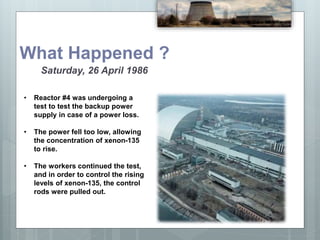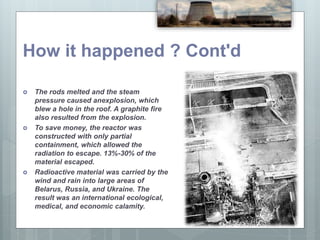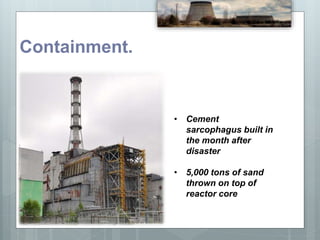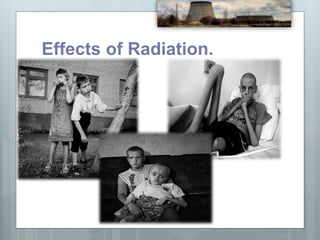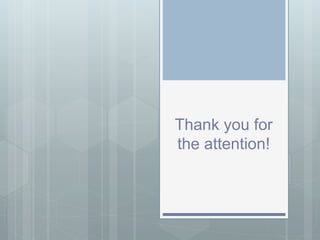The Chernobyl nuclear disaster occurred on April 26, 1986 at the Chernobyl Nuclear Power Plant in Ukraine. During a safety test on reactor 4, a surge of power caused an explosion that blew the reactor apart and released massive amounts of radiation. Hundreds of thousands of people had to be evacuated and the area remains contaminated. The disaster highlighted issues with the Soviet response and lessons about safety culture, emergency preparedness, and open communication.




